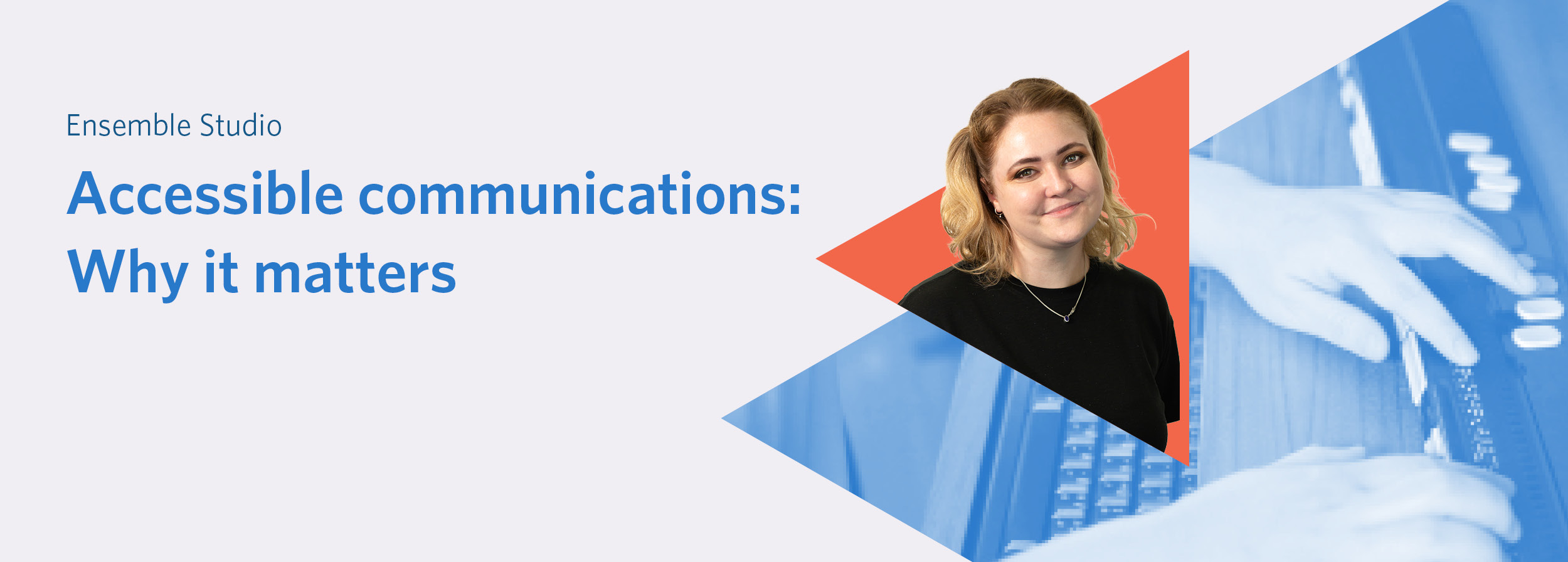
You may have heard the term ‘accessibility’ recently, but what does it really mean?
When talking about the accessibility of a building, we often think of the barriers wheelchair-users face. When we think of the accessibility of a website, we think about how someone that is blind may navigate it. These highlight only one small part of what accessibility really means.
In a broader sense, accessibility is the means to ensure that individuals are not excluded from using a product or service effectively. Meaning that anyone can do what they want with a similar amount of effort, within a similar amount of time.
When implemented, accessibility empowers people to live a more independent life.
Our goal is to make communications as accessible as possible to ensure no-one is excluded. It is up to all of us to make sure that the barriers that make communications difficult or impossible to use are removed. However, with a variety of accessibility needs across different audiences, it’s not always possible or realistic for something to be 100% accessible. As communications professionals, it’s our job to ensure that our work is as accessible for the audience as it can be.
The lack of awareness of surrounding accessibility is the most common cause of services being inaccessible.
Accessibility isn’t black and white. It’s shades of grey, measured in relation to a specific ability or situation as something that is accessible for some but inaccessible to others. A video might be accessible to people that are blind if it can be controlled using a keyboard or if the video is available as audio. However, if there are no captions or a text transcript available then the video will be inaccessible to someone with hearing impairments that can’t hear the audio.
It is important to remember that people’s abilities often fall on a spectrum, for example, someone could be slightly hard of hearing or completely deaf. Literacy levels can vary due to common conditions such as dyslexia, autism and dementia. Physical ability can show variations in mobility, dexterity, strength and levels of pain. Our global aging population also means that many will soon experience functional ability deterioration.
This should guide us to deliver services that accommodate the range of abilities specific to the end user.
The FleishmanHillard Accessibility Taskforce are a growing team of accessibility specialists, passionate about inclusion and ensuring everything digital is accessible. If you would like to know more about digital accessibility and how it can be implemented across your brand offerings, please get in touch.
Stacey Goebel, Senior Designer, Ensemble Studio, FleishmanHillard UK
Find Out More
-
Platinum CMS Award
March 13, 2024
-
Changing Communications Tack at Mobile World Congress
February 21, 2024


